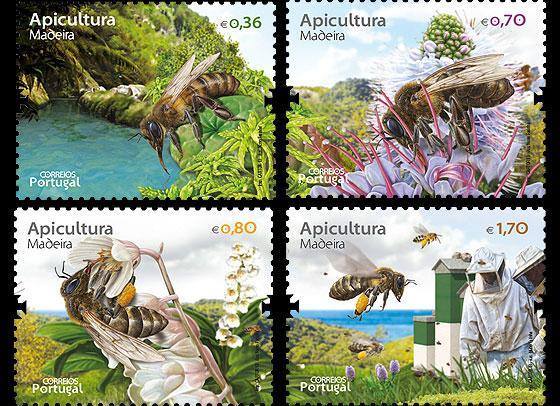Paulina Mena, an associate professor of biology, has been studying bees for over a decade, an obsession which stems from her undergraduate experiences at Universidad Catolica de Valparaiso, Chile. “I did my undergraduate degree in Chile, and decided to do bee stuff because Chile is a hot spot for bees. Bees like deserts; that is where they have diversified a bunch,” Mena said. “Because of that, we had a bee biologist in my department, and I did work with him as an undergrad.” Chile has “significantly more than 436 species of bees” according to a study published in the journal Genome, which used DNA barcoding to estimate the number of bee species in Chile. At the time of that publication, 436 species were known to exist based on documentation, but the authors found DNA evidence that suggests a great deal more exist in the country.
After finishing her undergraduate degree, Mena moved to Iowa in order to complete a Ph.D. in genetics and chromosome architecture at the University of Iowa. Today, Mena works with students every summer to collect, tally and document the roughly 400 different species of bees in Iowa. Working out of Central College’s field station and small, remaining prairies in nearby towns, Mena and her students assemble brightly painted traps in each hectare of prairie and, based on the number of bees that fall into each, calculate an estimate of each species’ numbers. Mena says that bee populations appear to be dwindling, particularly those species found in Iowa’s native tallgrass prairie environments, though research on the issue is scarce.
“The foundation of biology is genetic diversity, the genes that nature has to work with,” she said. “The key is that the more diversity within a species, the greater the chance that species has of coping with environmental changes. When you have isolated populations, diversity decreases, and any number of things could then lead to extinction.”
Significantly, many endangered and declining bee species are crucial for the agricultural industry. According to the Yale School of Forestry and Environmental Studies, a third of the world’s food supply relies on bee pollination. Corn and soybeans, Iowa’s predominant crops, are wind-pollinated and do not require bees to grow, but cross-pollination and the presence of bees does increase their yields, Mena said. Many other crops, from blueberries to almonds to strawberries, absolutely rely on bees.
“But even if it’s not important for the main crops here, we still eat a lot of things besides corn and beans. Without bees, our health would suffer because there are a lot of nutrients that are only in plants pollinated by bees.”
Back-to-back studies published in Science by researchers at the Natural Environment Research Council and the Department of Biology at York University in the United Kingdom both show frightening implications for a commonly-utilized class of pesticides called neonicotinoids. The vast majority of seeds sown by farmers today are coated with this pesticide. When the seed sprouts, the entire plant becomes covered in the chemical, including its pollen.
The researchers of the York study, which focused on the use of neonicotinoids on corn crops, demonstrate that exposure to natural concentrations of the pesticide for four months, the majority of the bees’ active season, killed both worker bees and queen bees over time. When neonicotinoids were used in conjunction with fungicides, the bee populations died off even more rapidly — the neonicotinoids became twice as toxic.
“Doses are sublethal to the bees, but it messes with them and affects their immune system, which makes them vulnerable to other things, such as mites or parasites and viruses,” Mena said. “This is definitely happening with the bumble bees, but we also think it is affecting native bees, though very few have been studied.”
Source: Little Village, Sept 19, 2017
https://littlevillagemag.com/iowas-dwindling-bee-population-is-part-of-…

- Login om te reageren
